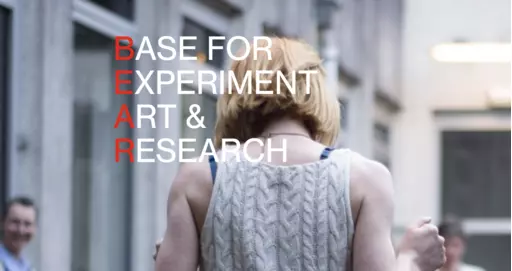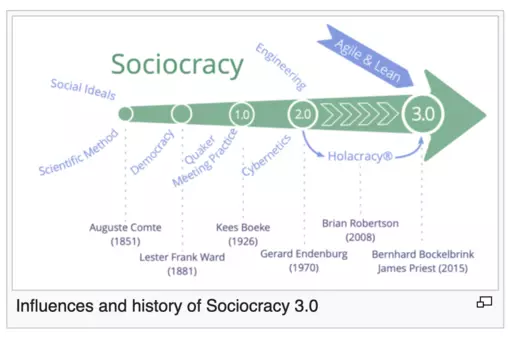
Anik Fournier

Anik Fournier
Anik Fournier is a theory teacher on the B.A. in Fine Art at the Base for Experiment, Art, and Research (BEAR) department, ArtEZ University of the Arts, the Netherlands, and curator of archive and research at If I Can't Dance I Don’t Want To Be Part Of Your Revolution in Amsterdam.
Anik Fournier is a theory teacher on the B.A. in Fine Art at the Base for Experiment, Art, and Research (BEAR) department, ArtEZ University of the Arts, the Netherlands, and curator of archive and research at If I Can't Dance I Don’t Want To Be Part Of Your Revolution in Amsterdam.

WEBSITE:

WEBSITE:
On the website School of Missing Men, ArtEZ Research Collective the School of Missing Men is described as follows: ‘The School of Missing Men takes as it starting point the fact that 75 percent of students at BEAR are women, a norm ratio in art schools across the Netherlands and abroad. How is it then that the art-world continues to be for the most part male dominated? The goal is to see how we can learn from our current situation, to see it both as a set of systemic problems to investigate as well as a series of opportunities to take hold of.’

WEBSITE:
Anik Fournier is a theory teacher on the B.A. in Fine Art at the Base for Experiment, Art, and Research (BEAR) department, ArtEZ University of the Arts, the Netherlands, and curator of archive and research at If I Can't Dance I Don’t Want To Be Part Of Your Revolution in Amsterdam.
The incident with Andeweg
Dutch artist Julian Andeweg faced numerous rape allegations that came to light after a detailed investigation by Dutch newspaper NRC.
Because of the School of Missing Men project, the students then came to me directly and said ‘we need to open up a discussion about this.’ Things had also happened in the past in the department which had, in fact, been dealt with, but it had only been possible to deal with them in a kind of crisis management way behind closed doors.
The previous director of the Art & Design departments acted immediately if you went to her to report an issue, but there was no clear process for her to take. There had been, for example, an incident between students, which she very quickly took through the official channels, but there was never an opportunity to discuss how to preventatively handle issues amongst the students or between the students and the faculty.
The available system was quite punitive. In the end, the person responsible in this case was asked to leave. There was never a public moment where we could unpack what had happened or why it happened. The only measures available seemed to be very reactive ones. I think this is what the students identified: that the tools for managing conflict in the field were very reactive, not preventative, and the process of crisis management was itself very disruptive.
The students then asked for a discussion about the things that happened. And that's basically how our process started for me. They came to me and I approached the Heads of Department, Edward and Priscila, who shared the same concern and where already in the beginning of starting this process, ‘This is something that students really want.’ They commissioned me and later Sol to put together the work group, to hold a series of in depth meetings we called ‘Open Rehearsals,’ to research how to put together a departmental code of conduct.
A Socratic dialogue is a conversation between two or more people in which participants are forced to think critically, yet independently. The method is based on asking and answering questions to stimulate critical thinking and to draw out ideas and underlying presuppositions. It involves active listening and comes with a strict set of rule. This makes it inherently a slow process in which a ‘plurality of perspectives is put forth and they are constantly reiterated.

WEBSITE:
Read more about the Socratic dialogue on the website of ArtEZ Studium Generale
So, we approached the conversation with this memory, thinking about transparency, about sharing what's going on and how we can avoid backchannels, secrecy, and rumours. Because things really snowball in back channels.
We didn't want to start by saying: ‘We are going to make a code of conduct.’ We wanted to say: ‘Okay, we realise that we don't have in place what we need in order to work and feel comfortable, where, if things happen, we can manage them. So, the idea was to research what it was we had, and what it was we needed to make. We found that there was, in fact, an existing code of conduct produced by the school back in 2013 for employees and the Student Charter.
Simultaneously to our research, in June 2020 ArtEZ Management publishes the statement Together in Solidarity (www.artez.nl/en/artez-statement) and updates the Student Charter and Employee Code of Conduct: ‘In 2021, the Employee Code of Conduct was amended in collaboration with the HR department, after it went to the MR and directors for advice. The Dutch Ministry of SZW inspection also had some recommendations. For instance, definitions of undesirable behaviour have been included. It also states, for example, that mixing personal and business relationships should not lead to an integrity risk. The Employee Code of Conduct www.artez.nl/media/about/employee_code_of_conduct_artez_2022.pdf is for employees, while the Student Charter www.artez.nl/en/study-at-artez/regulations-and-procedures/student-charter speaks about students’ essential rights and obligations, with a chapter dedicated to undesirable behaviour and procedures. Tools to support students and staff in case of undesirable behaviour can be found here www.artez.nl/en/study-at-artez/regulations-and-procedures.
First of all, the language in the code is very unclear. It was clearly made to protect the school. It mostly addresses responsibilities the tutors have towards the school and its reputation. Very little had been included about student-teacher or teacher-teacher interactions and power relations. It contains a lot of assumed understanding, it uses a lot of terms like ‘we agree to act in ways which we consider to be appropriate.’ But there was no definition of what appropriate means, who decides what ‘normal’ or ‘appropriate’ is, who ‘we’ are, or how to manage disagreements.

WEBSITE:
Code of Conduct - Artez and employee Code of Conduct 2022
By doing the research on existing codes of conduct, we tried to get a sense of what does and doesn’t work, with a particular focus on the language being used, and how that language may be introducing biases and blind spots. We also had invited guests, including the director of the exhibition program at UKS, the Young Artists Union in Norway, where they have been researching new protocols for accessibility. After some months of this process, we considered the form this document could take, and how the formal properties of a document produce social effects. Things like layout, the use of design, the use of procedural flow diagrams instead of just text, and so on. The process of the research was, I think, very logical. And by the end we ended up knowing roughly what we wanted to produce with the department.
Unfortunately, Covid safety guidance meant that the presentation of this research to the department as a whole kept getting pushed back. Throughout the process, we shared all of the information and findings, and you [Sol] produced detailed notes from each meeting which were published internally to the department. So, people could read what we had done and the summaries of our findings. But a lot of people felt that nothing was being done. Finally, in February 2022 we managed to hold a physical meeting with the whole department. What became clear from that meeting was that everyone feels it's important that this is happening, and it should happen, that we need to have these conversations and that we need to have structures and ways of communicating that are in place, but also that it was clear that we still needed to work on communication processes.
The students went into their tutor groups to return with proposals, but we had not worked out with the tutors how to hold these discussions, which led to a little crisis in this discussion. It then became clear that more needed to be done to hold these common discussions. But with the continuing pressures of coming off Covid restrictions, it was very difficult to schedule space and time for it, despite it actually being the thing that everyone felt was vital.
In November 2022, we had a pedagogical day with all the tutors to hear their contributions. With the notes, research and feedback from tutors, students, and alumni, the ‘Compass for inter-human learning and support tools came together.’
We introduce the ‘Compass’ as a kind of tool to support conversations about what we consider to be unwanted behaviour. What are the support structures that are in place? Where do you go with one type of problem, where do you go with another? What language are we using, and what is it doing?
It was very important to the research group that this remains a living document, so at the beginning of the semester there is time for each tutor base to discuss the 'Compass' in their group and report to their student representatives about anything they feel is missing, or anything that needs to be discussed. These representatives then report directly to the heads of department in order to form a new document. So, in this way, we hope that it will remain a living document that we can continue to work on, and it can fluidly change to address new concerns.
SA: Having been part of the conversation it's really nice to see the kind of terminology that forms the Compass, focusing on asymmetries, and ways of trying to frame power dynamics as things that are in process and fluctuating, rather than being fixed. It's not necessarily, I don't know, patriarchy, or something, but a much more complex intersectional field of power. A shifting and not necessarily predictable thing. I think that the way that you've defined forms of unacceptable behaviour also acknowledges the flexibility and the breadth of different experiences that exist in the BEAR community.
AF: Yes, it’s important to recognise these perspectives very clearly. To say that even if you do not see something the way it is being described, that doesn’t mean that's not how it's experienced by someone else.
The range the Compass covers is nice: it starts from the basic understanding that this campus has to provide a space where we are able to do what we're all here to do, which is get to work, to make art, and to learn. And so, addressing behaviour can touch on all things that interfere with that shared intention, like making mess in a shared studio. If your messiness is impeding on someone else's capacity to learn, it is something that can be addressed with the tools of the Compass, all the way up to severe transgressions such as, indeed, harassment. There is a whole range of things in the document to facilitate people functioning, living, working, and learning together. It's a kind of community directing manual.
I think it was you who said that, in a way, it's about building a culture together. You start to identify that there are certain things that we all value, and then you consider how to allow them to flourish in a tangible way. You can practise and bring this culture into being if you have parameters and values that you've agreed on.
Whereas, the response to past issues in the department has been very much too little too late, because the systems were always only able to respond to a complaint. Now, we wanted to introduce the sense that we can build a culture where that will not happen. If your culture is functioning well, you don't get to a point where you have to crisis-manage reactive moments in the first place.
AF: What we have made, the Compass, is something to guide us towards functioning together in our department. It has no legal or official standing within the school, or in a courtroom. Our position is that if there are situations that exceed the communal tools in the Compass, such as abuse, we give guidance on how to access the larger structure of support of the academy.
There is an official code of conduct for ArtEZ, with official and legal repercussions if people transgress acceptable behaviour. That's not the case with the Compass, although the school's code of conduct does of course also apply to our department. We have not made a replacement; it's just something that aims to create a culture of learning and support.
At the beginning of the semester, we started in-class introductions to our departmental Compass document with the students. We always introduce it with another teacher present, so that the students feel that they are not alone with this one teacher. And if they want to say something, they know that they have more dialogue space. We are still learning how to do this, but we feel that if we're together, we can support each other and observe different ways of going about it. The more we introduce the Compass, the more it opens up each time. The tutor groups are mixed across the years, so next year when introducing the Compass to new students, the other members of their tutor group, the second, third and fourth years, will already be familiar with it and with the working culture we aim for it to foster. So, this will naturally become a way of bringing people into an existing space.
Feedback has already come back that even though we thought we had made a very clear flowchart of the support structures, the people behind the structures are too abstract to the students, they are just names. The students would like to meet these people so that they have a sense of who they are and make the institution less anonymous.
SA: I think that there is often a challenge for students when they enter the first year at art school after having been in high school. Before this, they have not been accustomed to the idea that they're part of co-producing the space that they're learning in. Maybe that will become easier when this conversation is shared with the other students who are already familiar with the Compass, as a way of introducing them to having agency in the school.
AF: I think it's important for them as artists to be thinking about this. As an artist, I think you have some room to literally give form to the society we live in. So, this is aiming to teach exactly this. That if you don't like something, then it's up to you to change it. You know, you can have input and you can make the tools to start seeing change come into being.
One of the crises that is happening in education now, I think, is that it's increasingly more expensive to study. Many universities seem to think of their students as clients or costumers for whom they provide a good—a degree. Education becomes a form of consumption, and being a student becomes a passive position. In my opinion, you cannot have this mentality as a student and be a good artist. It doesn't go together.
So, it's good to think of this process as another learning tool. Of course, it's a bachelor's programme and many of these students will not become practicing artists. But I would like to think that they will become active citizens in any case, you know, so it's good for them to learn. I think it's the most important thing.

